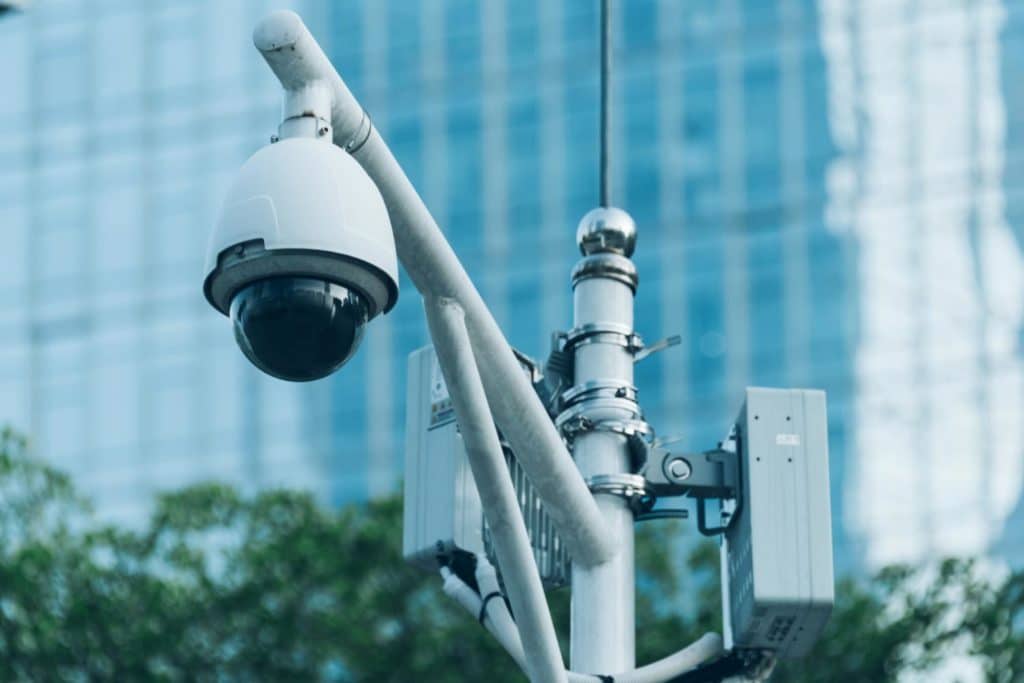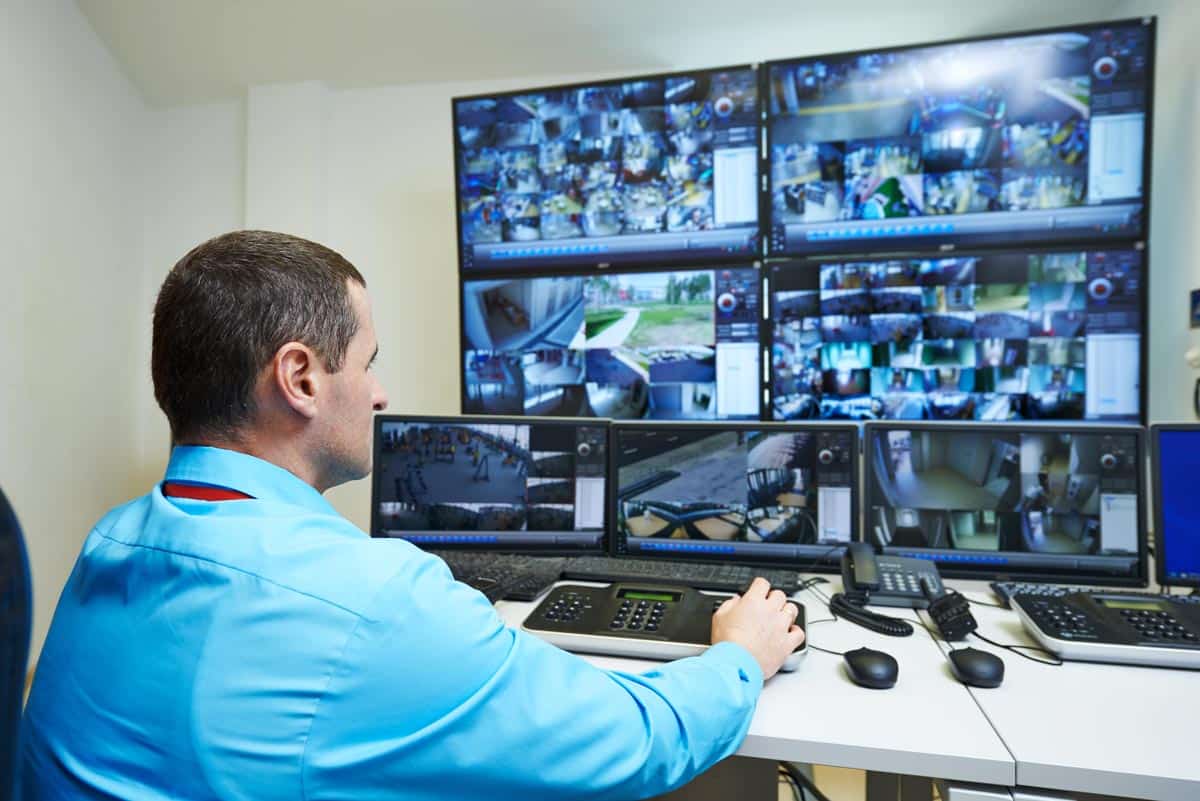Eighty-five million cameras are watching out for bad guys in the United States today. This statistic is a comforting thought for many business owners. Each year, security and surveillance cameras record criminal behavior and even stop crimes before they start. Whether at your home or your business, cameras give you peace of mind.
You’ll notice the words “surveillance” and “security” are often interchangeably used when talking about business camera systems, such as in the above paragraph. What’s the difference between surveillance cameras and security cameras? Is a security camera better than a surveillance camera? If it turns out there are functional differences between how we define these tools, which one do you need?
What’s the Biggest Difference Between Surveillance Cameras and Security Cameras?
When it comes down to it, “surveillance cameras” and “security cameras” are at their core the same thing. A camera you use as a surveillance camera can function just as well as a security camera. If there are differences, it’s in how you use them. Think of it in this way:
-
A surveillance camera is a camera whose chief use is surveillance – in other words, it is there to monitor.
-
A security camera, on the other hand, is a camera that is being used to protect a home or business.
A security camera monitors a single area of your business. A surveillance system is an interconnected web of cameras. If you put several security cameras together, they become a surveillance system. A surveillance system can be just one part of a security system, which can also include onsite guards, restricted entry points, and more.
When considering the differences between security and surveillance cameras, think about how they work. For example, security cameras record video and send it to a network video recorder – or if it’s even older, a physical tape recording – for later review.
Alternatively, newer security cameras can connect to the internet and send video footage to the cloud. The latest security cameras are smart, too. Because these cameras are internet-connected, you or your security team can see real-time footage. But even advanced security cameras don’t do much more than watch an area. The real power of security cameras is their application as an integrated surveillance system. Together, these tools can become a very powerful tool to protect your business.
Features and Functions of Surveillance vs. Security Cameras
The most critical difference between a surveillance system vs. a security camera is all behind the scenes. Surveillance cameras, at least on a commercial scale, are usually integrated into a web of business protection. A home has a security camera, and small business may have one or two security cameras. However, it takes a surveillance camera system to create comprehensive protection covering all angles and corners of a property.
A significant difference between security vs. surveillance cameras is in how you use them. Security cameras are one-offs or solo units designed to function independently. Security cameras are more suitable for small businesses. Larger companies integrate security cameras into a surveillance infrastructure to better protect their property.
Integrated surveillance camera systems frequently connect to IP (internet protocol) networks. The data they capture is stored in the cloud. You can access that video footage from an online hub dialed up on a cell phone or any other digital device.
Here are some of the key differences between surveillance camera systems and individual security cameras.
Security Cameras
-
Security cameras are individual units. Each captures data and records it.
-
A security camera can send data through the cloud or record it on an on-premises device.
-
Security cameras can be hard-wired or wireless.
Surveillance Cameras
-
Surveillance cameras are systems. They incorporate individual security cameras into a complete surveillance architecture.
-
Surveillance camera systems can be small (one to five cameras) or large (five or more cameras), depending on the business size. But because they are an infrastructure of several integrated security cameras, they capture higher volumes of data. Larger surveillance systems almost certainly requires that you send the video feed to the cloud.
-
Entire surveillance camera systems are wired or wireless.
It’s also important to consider the words we use when talking about these tools. The idea of surveillance is associated with covert behavior. Today, surveillance cameras watch us from street lights, airports, in large public spaces, or anywhere people congregate. Security, on the other hand, is often associated with a visual physical presence, such as a security guard.
For example, a security camera can be in the open and visible. In these cases, the security camera acts as a great crime deterrent. When they see a security camera, criminals know you’re watching.
But a security camera can also be hidden for secret surveillance of an area. Often, surveillance camera systems are monitored by security staff or law enforcement. Increasingly sophisticated surveillance cameras leverage artificial intelligence (AI) to help fight crime. You may not see the surveillance camera at a casino, bank, or shopping mall, but it protects customers and the business.
Ultimately, a security camera is usually a visual tool. Surveillance can be, and often is, hidden. A security camera is an independent unit for watching a property. Surveillance cameras integrate into a larger security web for better business protection.
Do You Need Surveillance Cameras or Security Cameras?
Pro-Vigil is the nation’s leading expert on security cameras and surveillance camera systems. The best way to understand whether you need security or surveillance is to call us to evaluate your business. Find out why companies choose Pro-Vigil. Call on us at 866-616-1318 today.
Q&A
A security camera is a separate unit for monitoring your business. A security camera is often out in the open, acting as a deterrent to criminals.
Surveillance cameras are part of an integrated security system for better business protection. They are often hidden. You will find these systems in mid- and large businesses and in public places where people congregate, such as theme parks or concert venues.
Some of the differences between surveillance and security cameras include the following:
- An individual security camera can be wired or wireless.
- A security camera sends data to an on-site recording device or the cloud.
- A surveillance camera works within a fully incorporated system to monitor a wider space or a larger application.
- A surveillance camera system can be wireless or wired.
No matter the size of the business, there is huge benefit to having a surveillance camera system. Individual security cameras can have the same features as the devices used in a surveillance system. The difference is that each security camera is designed to function on its own as a solo unit. An integrated surveillance camera offers a web of intelligent protection to cover all four corners of a business.









